Systematic screening reveals a role for BRCA1 in the response to transcription-associated DNA damage
- PMID: 25184681
- PMCID: PMC4197947
- DOI: 10.1101/gad.241620.114
Systematic screening reveals a role for BRCA1 in the response to transcription-associated DNA damage
Abstract
BRCA1 is a breast and ovarian tumor suppressor. Given its numerous incompletely understood functions and the possibility that more exist, we performed complementary systematic screens in search of new BRCA1 protein-interacting partners. New BRCA1 functions and/or a better understanding of existing ones were sought. Among the new interacting proteins identified, genetic interactions were detected between BRCA1 and four of the interactors: TONSL, SETX, TCEANC, and TCEA2. Genetic interactions were also detected between BRCA1 and certain interactors of TONSL, including both members of the FACT complex. From these results, a new BRCA1 function in the response to transcription-associated DNA damage was detected. Specifically, new roles for BRCA1 in the restart of transcription after UV damage and in preventing or repairing damage caused by stabilized R loops were identified. These roles are likely carried out together with some of the newly identified interactors. This new function may be important in BRCA1 tumor suppression, since the expression of several interactors, including some of the above-noted transcription proteins, is repeatedly aberrant in both breast and ovarian cancers.
Keywords: BRCA1 interaction screening; DNA damage; transcription.
© 2014 Hill et al.; Published by Cold Spring Harbor Laboratory Press.
Figures
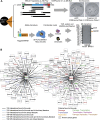
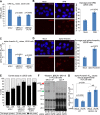
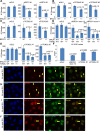
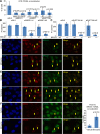
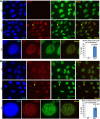
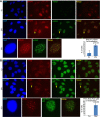
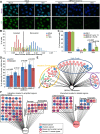
References
-
- Aguilera A, Garcia-Muse T. 2012. R loops: from transcription byproducts to threats to genome stability. Mol Cell 46: 115–124 - PubMed
-
- Bhatia V, Barroso SI, Garcia-Rubio ML, Tumini E, Herrera-Moyano E, Aguilera A. 2014. BRCA2 prevents R-loop accumulation and associates with TREX-2 mRNA export factor PCID2. Nature 511: 362–365 - PubMed
Publication types
MeSH terms
Substances
Grants and funding
- DP1 GM105378/GM/NIGMS NIH HHS/United States
- P01 CA080111/CA/NCI NIH HHS/United States
- R01 HG001715/HG/NHGRI NIH HHS/United States
- R01 CA136512/CA/NCI NIH HHS/United States
- T32 GM007753/GM/NIGMS NIH HHS/United States
- U54CA112962/CA/NCI NIH HHS/United States
- R01HG001715/HG/NHGRI NIH HHS/United States
- P01 NS047572/NS/NINDS NIH HHS/United States
- DP1 GM105378/DP/NCCDPHP CDC HHS/United States
- U54 CA112962/CA/NCI NIH HHS/United States
- P01NS047572/NS/NINDS NIH HHS/United States
- F30 CA167895/CA/NCI NIH HHS/United States
- P50CA089393/CA/NCI NIH HHS/United States
- 1F30CA167895-01/CA/NCI NIH HHS/United States
- P50 CA089393/CA/NCI NIH HHS/United States
- P01CA080111/CA/NCI NIH HHS/United States
- R01CA136512/CA/NCI NIH HHS/United States
LinkOut - more resources
Full Text Sources
Other Literature Sources
Miscellaneous
